Conjure Puberty: The Sword and The Sorcerer (1982)
The Sword and The Sorcerer (1982)
Dir. Albert Pyun
Starring: Lee Horsely, Kathleen Beller, Simon McCorkindale, et al.
In case it needs to be said — spoilers.
Okay. Let’s go…
The Sword and the Sorcerer is the cinematic equivalent of the first homebrew table-top gaming campaign run by a 13 year old.
I know this because I turned 13 in 1982. I also know this because I likely ran my first homebrew table-top game that year. The step from 12 to 13 seems like nothing to an adult; we forget the power these thresholds hold for children. At 12 you are a child. At 13 you are a teenager. There is, I believe, a biblical injunction that calls for us to put away childish things as we leave childhood — but that never really worked for me.
When he was interviewed before his tragic death, the late, great herpetologist/artist/song stylist/adventurer and man of mystery Dean Ripa was asked to explain happiness. I’m paraphrasing, but his answer was something like “Everything I loved doing at 10 years old, I just kept doing.”
I can get behind that thought. What I loved as child I have kept. What you love is an act of self-creation. What you love reveals part of who you are — at least I believe that. Among the things that I loved enough to bring forward were books. Specifically, fantasy books — and more specifically — sword and sorcery books. Another thing I brought forward was a love of table-top gaming. Both of these things were so central to my childhood that I have carried them with me for the four decades since in one way or another. So as you might imagine, in 1982 I was completely stoked for the release of one movie over all others.
That movie was not The Sword and the Sorcerer.
[Click the images for barbarian-sized versions.]
The movie was Conan the Barbarian. Milius’ Conan The Barbarian was a movie that simultaneously excited and gravely disappointed my youthful self. It was a fun movie, with a great soundtrack (and boobs), but Arnold was not the Conan I had read about. Thulsa Doom was a Kull villain. The world portrayed was simultaneously alien and yet not alien enough. It was an engaging counterfeit of the stories I longed to see on film — or more to the point of this review, that colored my tabletop gaming experiences. My friends around the gaming table got it. Conan the movie was fun, quotable, gory with a soundtrack for the ages, but it wasn’t Conan of the books. It may stand on its own — but it is not remotely what the words and the Frazetta covers conjured.
What gets lost is that two weeks before the release of Conan, Albert Pyun’s The Sword and the Sorcerer came out. The poster for that movie was so much more Conanesque than the Conan poster. Perhaps, I thought, this movie might be something to make up for the problems I had with Conan.
I wish I could give you details of my experience of the film at the time, but to be honest, I have seen this movie, whole or in parts so many times and in so many different states of mind, that at best I’m an unreliable omniscient narrator of my own history. I have watched this movie utterly straight at 13, and watched it (altered) at 18. I have stumbled across it in each decade of my life, even If I never specifically sought it out. And I have always felt this utterly strange fascination with it.
So I watched it again very recently to provide this review. I put it off for a while, life will always throw stuff in your way, but my girlfriend Al (uber-geek, tech maven and den mother to all wayward nerds) watched it with me. (She is a hardcore Beastmaster fan and so had her interest piqued having caught snippets of SnS over time.) And in the last watching of the film I have finally understand the terror and the fascination of this work of cinematic… work.
The Sword and the Sorcerer is a terrible piece of film by almost any measure. It is not a movie that is so bad it’s good.
It is so bad, it’s really bad.
Perhaps it is only that the film resonates in the places in my soul that spark enjoyment from a bastard hybrid of nostalgia and early onset dementia. Perhaps it’s some deviant sort of film pareidolia that has me finding patterns where none exist. It’s like that Wham video with the Sisters of Mercy playing over it? The way it all lines up seems planned, when you know it wasn’t. And the end result makes the universe weirder than it was before the music started.
So — either I’m right and some of you will understand what I’m saying — or I’ve gone off the deep end and need help. Either way I’m at peace with the outcome.
I’ll double down on my hypothesis. This is a film that every 13 year old kid who grew up in the seventies and gamed through the 80’s would have made out of their first homegrown role-playing campaign.
At the risk of sounding a bit too binary — there are two kinds of table-top gamers (at least there were back then.) There are the ones who were there to play a game. A group tactical exercise with rules and an end zone. Levels and classes and alignments Oh, my!
And then there were the ones who wanted to have a story telling jam that would evoke the adventures of the books we had read. The first group played D&D. The rest played D&D and also other games.
If you started playing young, you know what I’m talking about. The homegrown session I’m speaking about was the session that you put together in a lined school notebook. You had been introduced to Dungeons and Dragons and played with the elves and halflings. You ran through the modules. One of you had the old hex paper map of Greyhawk. It was fun, but it was always D&D. I know gamers who have been playing for 40 years. All they play is D&D. No judgement. (Okay—judgement, sorry.)
The second group branched out from the D&D modules. Don’t get me wrong, they were fantastic in their own way — they provided a step by step adventure from start to finish. There was very little in the way of creative thought needed. They were wonderful in their own right — but they were also the training wheels of tabletop gaming.
No 13 year old in their right mind wanted anything to do with training wheels.
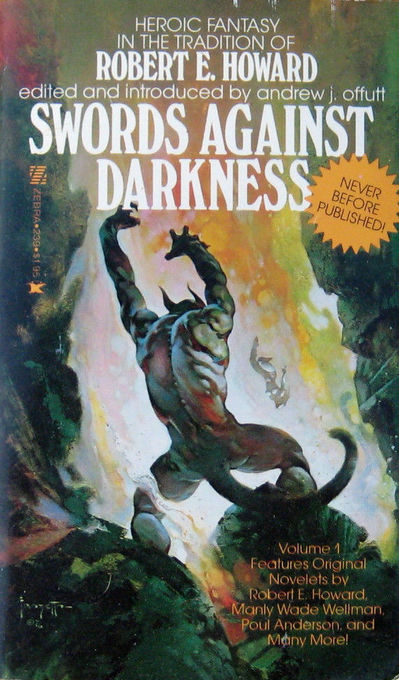 |
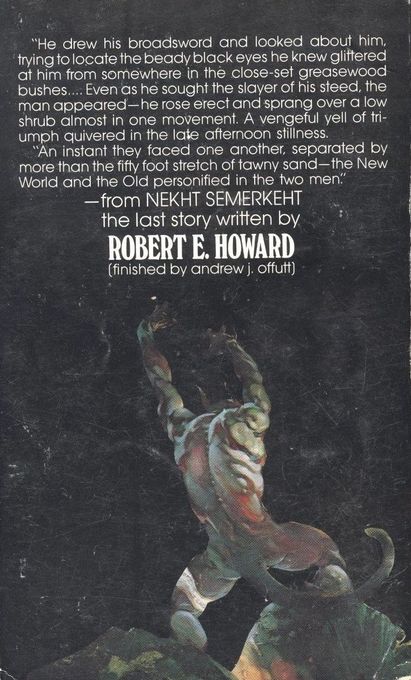 |
Swords Against Darkness (1977) Cover by Frank Frazetta
Perhaps you read a bunch of the other fantasy that was kicking around. You got your hands on some Robert E. Howard (or failing that some Sprague de Camp and Carter). You found the old 1976 DAW sf paperback printings of the Elric saga and threw yourself into the bloody emo-fatalism of it all. You were maybe drawn to the Frazetta covers of Swords Against (X), and found Lieber’s Newhon, where Fafhrd and the Grey Mouser demonstrated that friendship and crime were the best mix of all… if you were super lucky you managed to find Karl Edward Wagner’s Kane books and discovered things far darker than your halfling thief was prepared to pickpocket — and somewhere along the way J.R.R.Tolkien became literary Prog-Rock up against your discovery of literary Punk.
Kane novels and collections by Karl Edward Wagner
Decades later I can love both Yes and the Damned, but in 1982? Oh hell no. Tribes were chosen. Allies gathered and spears sharpened. Your tastes and those things that advanced your tastes; they let you know who you are in pieces and bits — and they are very serious things at the age of 13.
Lord of the Flies serious.
On-line toxic fanboy hate levels of serious.
So D&D stopped cutting it. Perhaps you asked why your fighter couldn’t climb a wall? Or why clerics couldn’t use spears? Or why a 40 pound halfling needed to be stabbed 30 times with a dagger in order to die. Maybe your RPG campaign altered at that point. You stepped further into the game shop to the darker shelves — seeking something. Maybe like my group — you left the D&D campaign to begin your own new adventures with something more primitive and brutish and “logical” Something like Runequest or its offspring Stormbringer or Call of Cthulhu… or you found Traveller, Top Secret or Car Wars. And eventually you branched out and made your own story jam happen.
Whatever it was that made you break — you left the modules behind. We don’t need “the man” forcing us to follow an adventure — even if the maps and illo’s were cool. No. You crafted your first homegrown setting. We would make up our own adventures! And so the worlds were drafted in pencil, made to look like the maps on the intro pages of those fantasy novels that inspired you. We would craft our own worlds! We would map our own destinies! We…
…were 13 year old boys.
Albert Pyun may have been 27 when he directed this movie — I have no idea how old the screen writers were at the time — but they approached making this movie like 13 year olds. This is not, ultimately, a good thing. This movie is the fantasy movie equivalent of Steve Carell’s painfully fumbling breast fondling speech in The 40 Year Old Virgin.
And that is because that kind of fumbling anxious earnest place is exactly where this movie exists. And that is what makes it both terrible and fascinating in the way a car crash is fascinating.
Lest you think I’m completely mad — let’s compare a 13 year old GM from 1982, with Albert Pyun in 1982.
A 13 year old GM in 1982:
Uses a stolen world, with stolen characters. Things are renamed badly. Tropes are used in a ham-fisted manner. You put anachronistic arms and armour besides names that were stripped of any historical meaning, entered into your campaign in a slap-dash manner. Stuff was put in because you thought it was cool. Not because it made sense.
You may have set your campaign in a fictional world, but the names were English or Latin. The made up names were ripped off something you heard, somewhere else-or they were shortened or lengthened or the vowels were shifted.
At least one kid in the gaming group had that piece of lined notebook paper with the special weapon they had designed for their favorite character to use. A murderous confection of a design. Blades and chains and secret spring-loaded daggers in the hilts — the improbable construction, the unwieldy size, the sacrifice of every notion of function for the rule of cool.
Your world was populated with one dimensional characters who played their parts with utter conviction. Your villains and situations were taken from other stories. The personalities drawn from fiction you had read.
The hero was not just stalwart but part rogue. (I mean — we all read Thieves’ World too after all at the time.) Ideally he would put together the best bits of the favorite heroes we had from all of that other fiction. Your heroes also needed awesome names.
And then there was that undiscovered country. The female.
Geekdom now is foundationally female in 2018. This is good. In 1982? Nope. Never. T’was a wasteland bereft of distaff players. It was boy’s town around the table (and anywhere else actually). The alluring mystery, that thing, that combination of longing, nascent lust and utter terror that boy 13 feels towards the female is powerful. It’s a strange border where the stalwart, the upright, the noble met the burgeoning corporeal drive that balanced the idea of protection and ravishment (whatever that actually meant) on a razors edge. Women were the eye candy on the cover and the reward in the tale. This was, after all, a fantasy by young teens — children taking a couple of uncertain steps into adulthood.
So of course the women must be either naked or dead.
And because it had gone off the standard module based narrative, our 13 year old GM never lets logic or continuity interfere with the crashing torrent of the story. The obviousness of the murder hobo you have designed never seems to provoke the reaction you might reasonably expect from a piece of literary fiction. (Who rides around with a million gold coins on a horse? Who has a bunch of easily recognizable facial tattoos and bright silver hair but never gets caught by the guards? Who sleeps in full field plate armor? Your player characters, that’s who.)
Mistakes in continuity happen. You ignore them. (Or you get in a huge argument with your players while they try and hold you to some part of the narrative you forgot and you aren’t willing to go back and change.)
And finally — most importantly — the only other thing you need to realize about that 13 year old GM running that session was how serious and utterly straight the tale was. Humor was allowable — but mockery? Never. There isn’t enough self-awareness to absolve mockery and not enough self-confidence to embrace it.
Now let us compare our 13 year old GM with Albert Pyun in 1982:
Stolen names: We need to name a good king? Let’s go with Richard. A villain? Oooh Cromwell. (Someone’s Dad was watching A Man for All Seasons last week on PBS) A torturer? Verdugo. Sounds Italian enough. A Machiavellian adviser to the big bad villain… um… how about we just lose a couple of syllables and call him Machelli.
The kingdom of the good folk? Let’s call it Aeden. It’s like Eden — but it’s not. The setting is anachronistically European. The king of Aedan (really) is King Richard. The guards use scimitars and wear cowls. The evil archers look Roman, but use flaming arrows, the peasants all look like peasants, which means brown torn clothing without sleeves most of the time. King Richard. Titus Cromwell, castles and tabards, made up places, ancient evils — I’m betting Pyun had a pencil drawn map just like in the beginning of every fantasy novel ever.
And then there is our hero who needs a name — something bold and dangerous sounding. Like Claw or Fang — but not like claw or fang because that isn’t noble enough for a prince. So we get Prince Talon!
Prince Talon, set on the run as a young prince, with two fingers taken off by a crossbow bolt before he goes — -He slays his opponent with the single most ridiculously unwieldy magical sword in the history of film. The tri-blade sword. One blade is good — -three blades must be better. But three blades where two of them fire out of the sword to impale enemies? There cannot possibly be a better thing than that. Ever.
I’ll bet Pyun has a that sword scribbled in pencil in a notebook behind the map.
As for the story? In a few sentences; the evil Cromwell makes a deal with a semi-human sorcerer raised from a centuries long sleep to barter for power to invade the peaceful kingdom of Aeden. Cromwell kills everyone in the royal family except for young Prince Talon. Talon escapes, loses half his hand, bearing the tri-bladed sword. Over the years he becomes a thief, a reaver, a slayer, with… well you get the picture. In the years since his escape he has become known to everyone as a general, mercenary who has saved kingdoms and whom everyone from pirates to kings owes an unpayable debt. He returns home where a rebellion is in the offing, led incompetently by Kathleen Beller and Simon McCorkindale. He gets captured, tortured, crucified at a banquet, escapes and wins with the help of everyone else in the town, from his band of mercenaries, to old pirate friends and even the foreign kings at the banquet. He takes revenge upon Cormwell and Xuxia and then after enduring a painfully edited series of shots with mercenary, pirate and king shouting his name while thrusting swords in the air — he claims his callimastian prize and although our hero could keep the girl and claim the throne, he would rather swagger away from the whole mess and let others king it up while he treads the jewelled thrones of the earth under his sandaled feet.
Pyun’s inclusion of women meets the naked or dead hypothesis. There are a lot of boobs for a movie of this time. (See 13 year old boy)
Kathleen Beller in The Sword and the Sorcerer
Kathleen Beller, pre-Dynasty, is there looking half dressed and perky, and spends her time seducing men and then kneeing them in the junk — because strong women show their boobs, stare into your eyes and knee you in the junk. Because to a 13 year old boy, one’s first experience with a girl outside of your family probably ended up at least once with a knee to the junk. This is what passes for strong female protagonists for a 13 year old.
The rest of the female cast generally wait around in semi-nude states until tortured to death. Unless they have clothing — in which case they don’t make it out of the introductory motivational scene in Act 1.
The movie shamelessly rips off the Conan stories in so many places and with only the thinnest of skins and never gets it even remotely right. Our captured hero is actually crucified during a dinner party. There were two Sword and Sorcery movies released in the first five months of 1982; both of them have the hero crucified. (“A Witch Shall be Born” is the name of the original Howard tale where this occurred if you were curious.)
The crucifixion scene is one thing, but the eponymous Sorcerer in the piece, Xuxia (played by Richard Moll in some pretty good effect makeup), is without a doubt Xaltotun from the Conan story, “Hour of the Dragon.” His ancient kingdom of Delos is actually Archeron. He is the evil that Cromwell raises in probably the best scene in the film. Moll’s Xuxia is repellant and the make-up excellent. The screaming faces of the cerement where Cromwell raises him is quite disgustingly effective. The heart pulling scene to demonstrate Xuxias power and eeeevil, upon his awakening was also quite intense for the time.
The one thing I cannot fault this movie for is the cast. Lee Horsely was a criminally underused actor. He had charisma to spare. He looked completely heroic. In this film he has these small character beat asides that bring Talon to life. There is a moment when he is defenestrated and falls into a stable. He stops to examine a piece of straw for just a second. Something obviously unscripted and yet it completely sells this ridiculous scene and all that follows. He is a mixture of Errol Flynn, Han Solo and obviously, Conan.
The villain Titus Cromwell, slayer of the hero’s family and usurper of all that is good and holy, is played by Richard Lynch. Lynch playing straight-up evil is always excellent. He was one of the premier character actors in Hollywood in the seventies with some of the most menacing performances ever put to celluloid. His scarred face (a result of setting himself of fire while on LSD) was a mix of beauty and threat. (Although the scene seems dated now, I urge you to check out William Peter Blatty’s Ninth Configuration for an excellent example of Lynch being Lynch).
He himself was, by accounts, a brilliant man, playing six instruments and speaking the same number of languages fluently. Lynch was a professional and always sold his role. Always. Cromwell’s drive sets off the actions of the movie. His blind paranoia is unintentionally hilarious, especially when juxtaposed with the semi-human sorcerer Xuxia played by Richard Moll or Machelli, the ophidian advisor played by George Maharis in a bowl cut hairdo and black silk court attire.
Richard Moll as the sorcerer Xuxia
The film made use of the very best character actors in the local SAG offices. Anthony Delongis as a hapless cowardly peasant; Jeff Corey as Carccus the grizzled Bar Owner and the incredible, omni-present — utterly threatening Robert Tessier as Verdugo the Torturer. These were some of the very best character actors in Hollywood doing their best to sell their parts in a silly, silly movie.
An especial favorite is Maharis, desperately fast-talking Lynch’s Cromwell to save his life at any point in the story. Adding to the hilarity is the fact that Cromwell accuses everyone of being the evil sorcerer he double crossed, except the man who looks, acts and seems like the single best candidate to be the evil sorcerer in disguise.
So the cast is good. They play their parts at a level far higher than the material they are given. The special effects are quite good (for 1982). The choreography is also quite good (for 1982). Because for a 13 year old, gore, boobs, earnestness and sword fighting is the most important part of any tale.
You can sacrifice things like continuity, logic, verisimilitude for the character beats to a degree. And it is in this sacrifice that the movie becomes truly entertaining because the degrees to which it ignores simple rules of making a movie involves a protractor attached to a fan blade. Whatever is beyond the pale — this movie is beyond that. It’s almost like Pyun just agreed not to backtrack to have things make any sense — or no one told him when he was making some fairly egregious mistakes. I submit the following to the court for consideration.
In the first act, dear evil Richard Lynch demands that his men find the wayward prince. It isn’t an offhand comment either, he wants him found and killed. So I assume they unsuccessfully combed the kingdom and the rest of the world for a brown haired young man of noble bearing, missing half of his hand, bearing a unique three bladed air-powered harpoon sword, who becomes an infamous mercenary, pirate, and the saviour of multiple kingdoms and — most importantly mind you — doesn’t change his name.
Richard Lynch as Titus Cromwell
There is a pretty scene of the post-crucifixion Talon, wearing naught but a loin clout, his thews bloody and glistening, slashing through a ring of swords born by Cromwell’s guard, shattering the metal in slow motion. The very next scene, every guard attacks with a fully repaired sword. It’s almost like the guards had swords listed on their character sheets so Pyun just rolled to attack anyway.
And finally — the piece de resistance, the moment beyond any other moment in this film that best exemplifies the utter lack of concern for continuity or logic — the moment where everything is subverted to the emotional beat, is the well-deserved death of Verdugo the Torturer.
In the dungeons of the castle, Robert Tessier’s Verdugo stands at a sharpening wheel, sparks flying as he puts the edge on a wicked looking blade. Earlier in the movie, Talon’s mercenary band and his pirate allies were captured. Verdugo struck down the (half naked) female rebel spy in front of the pirate captain and the mercenaries — he seemed quite emotionally tied to this character, perhaps the love story between the third string characters ended up on the cutting room floor, we will never know.
The captain, swearing revenge during the escape, finds Verdugo at the sharpening wheel. They grapple. The captain gets Verdugo in a chokehold and forces his face ever closer to the spinning sharpening wheel. (Once again — thews.) Eventually, inexorably, the torturers face meets spinning stone wheel and Verdugo’s head explodes in a spray of gore, his bald Italianate soul condemned to whatever hell will take him.
Except — the sharpening wheel is clearly pedal driven. You see the pedal under the wheel being worked by Verdugo in the previous scene. So apparently Verdugo, in the midst of his life or death struggle didn’t have presence of mind enough to stop pedalling.
You can’t buy continuity control like that. Well you can actually, if you cared.
It is a moment of meta-fiction. It’s when the patients took over the asylum.
But ultimately it doesn’t matter. I will probably watch this film one more time — likely at a cottage retreat in the fall. I’ll be there with some of the same guys I ran the campaigns with in 1982. One of the reasons I love the table top game is that it lets me keep old friendships current.
I will put this train wreck of a movie on and test my hypothesis against their skepicism. Forcing people to drink whenever a dick joke is made, drink twice when a junk shot happens. We will cite actual examples from long lost homegrown games while wives and girlfriends — some now players and some not — shake their heads at us and roll their eyes at each other. (Except for Al. She’s cool.)
I actually gave half a minute of thought to the idea that if they actually had all of the pieces that Pyun had at the time, one might have tried for the “Hour of the Dragon” instead of this slow motion car crash. But I have let that idea go.
Sword and Sorcery isn’t about the epic, neatly tied up in a bow in Act 3. It’s about wandering. It’s about questionable morality — of a hero finding limits to his own depravity. It’s about struggle for the sake of struggle. It’s about blood and swords and boobs. Sword and Sorcery isn’t made for the movies. It’s like a role playing campaign — it needs time and space to breathe.
You’d need a Netflix series to do any of it properly.
John Searle is a Canadian insomniac working his way through a Masters degree and breaking that up by watching far too much classic television and old movies. He is presently working on his first novel. He expects to have it finished within the next decade. Give or take… another decade. His last article for us was a review of the 1970 ABC show The Immortal.
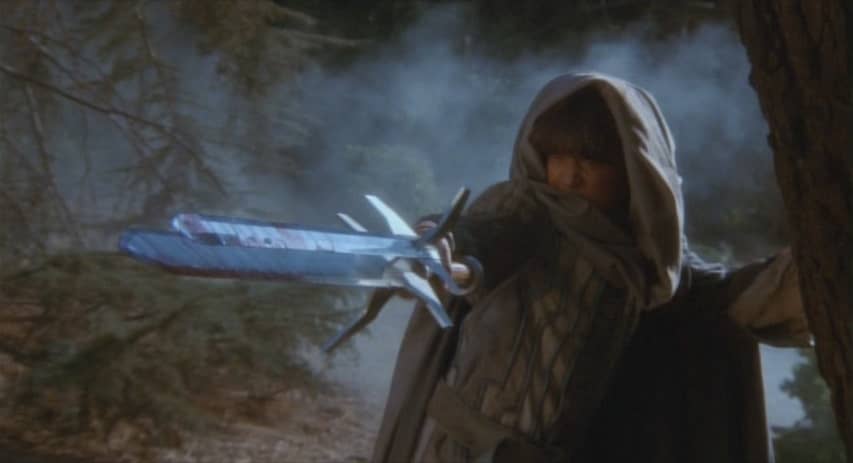
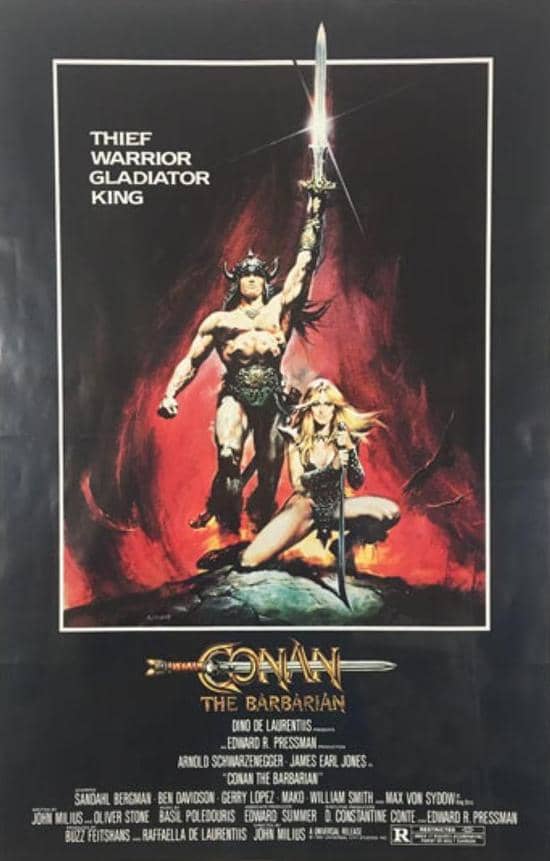
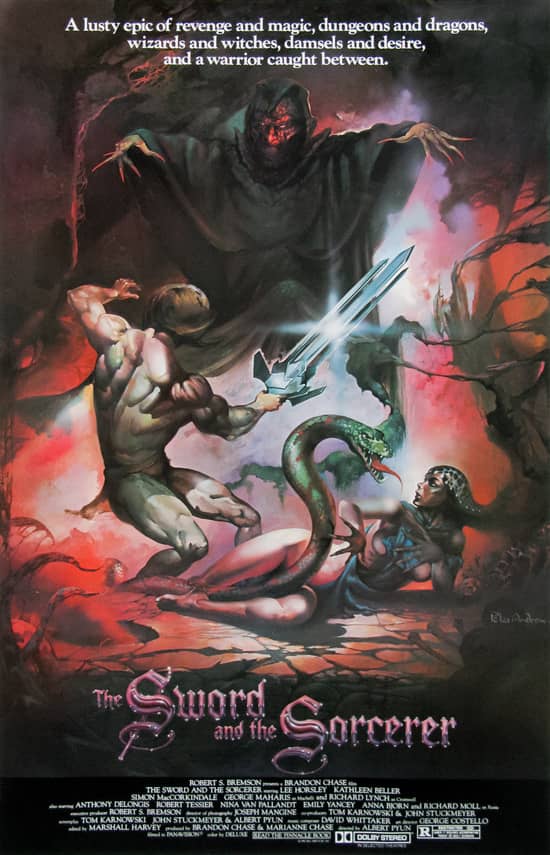
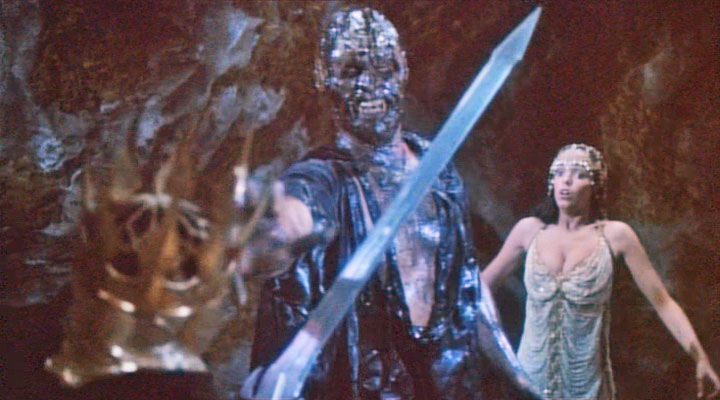
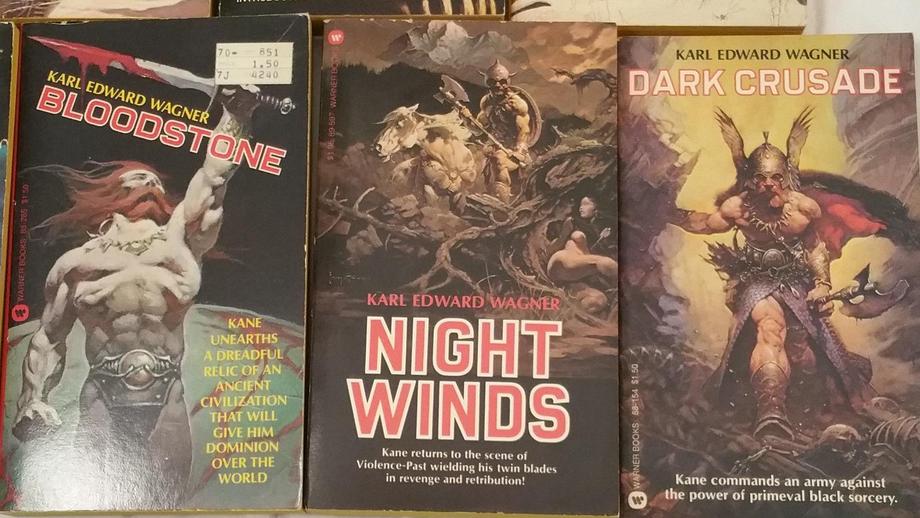
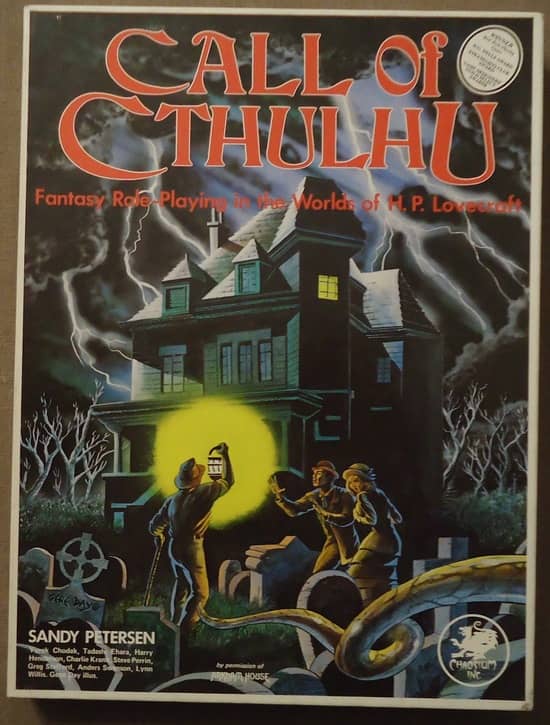
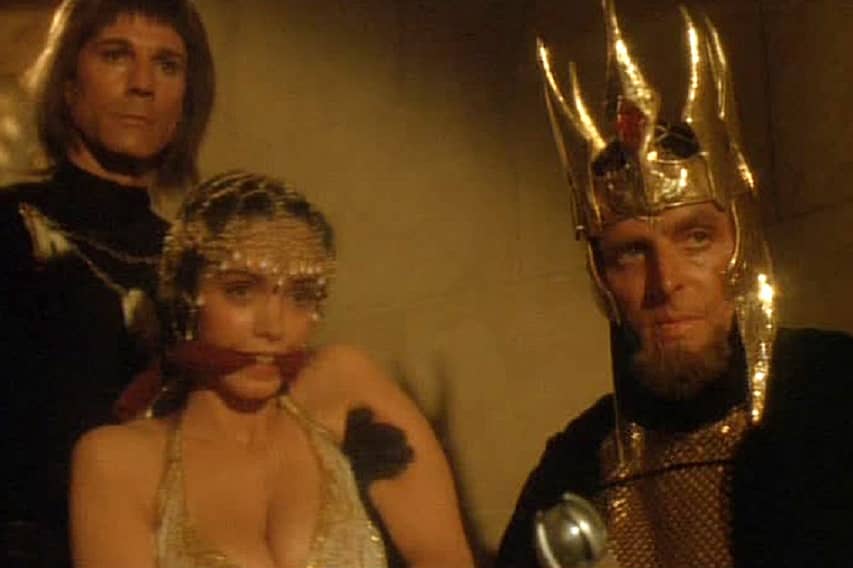
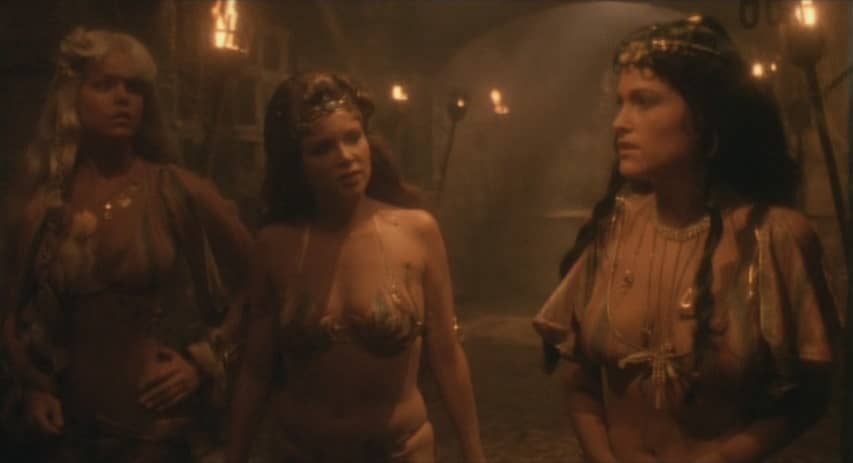
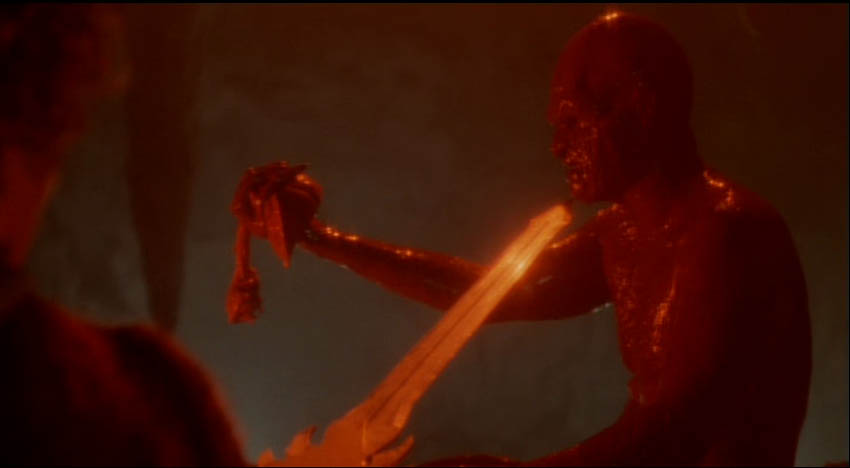
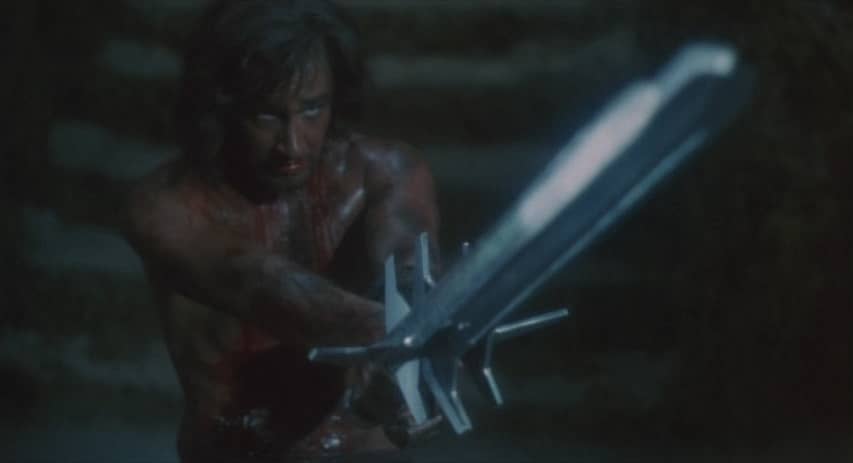
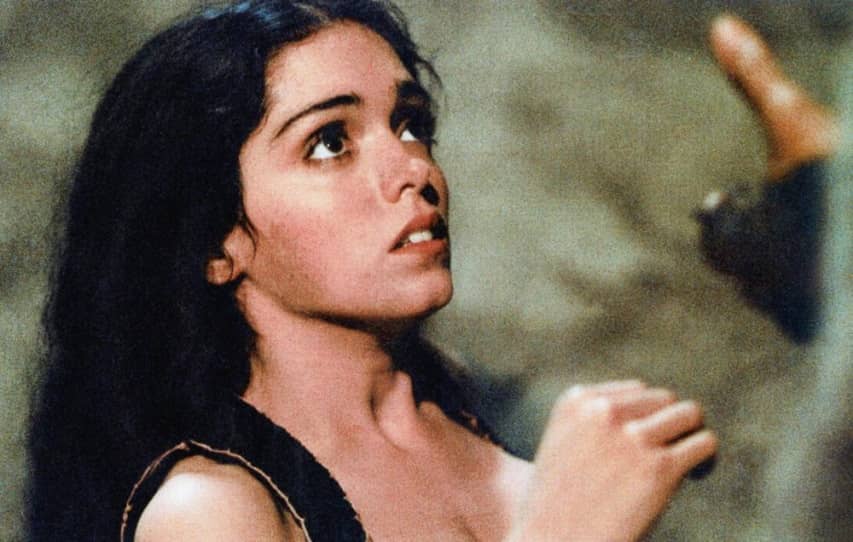
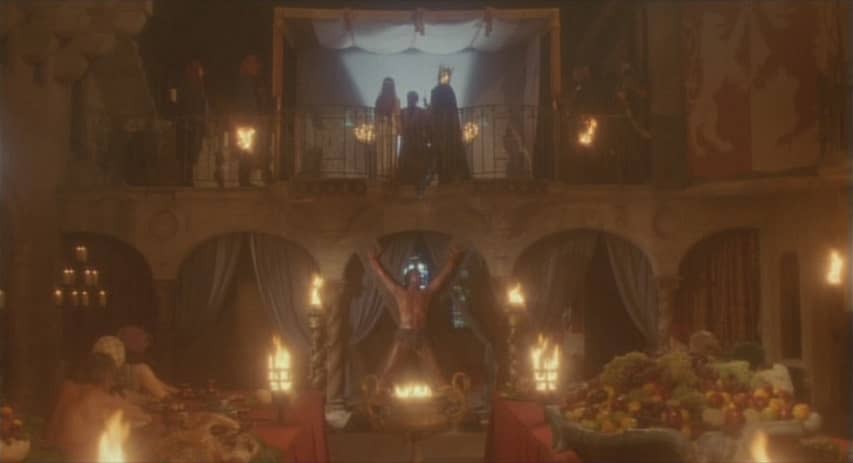
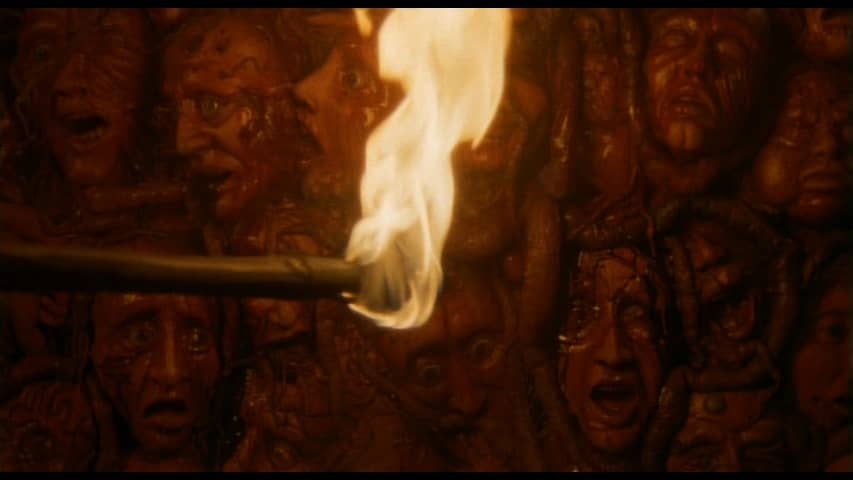
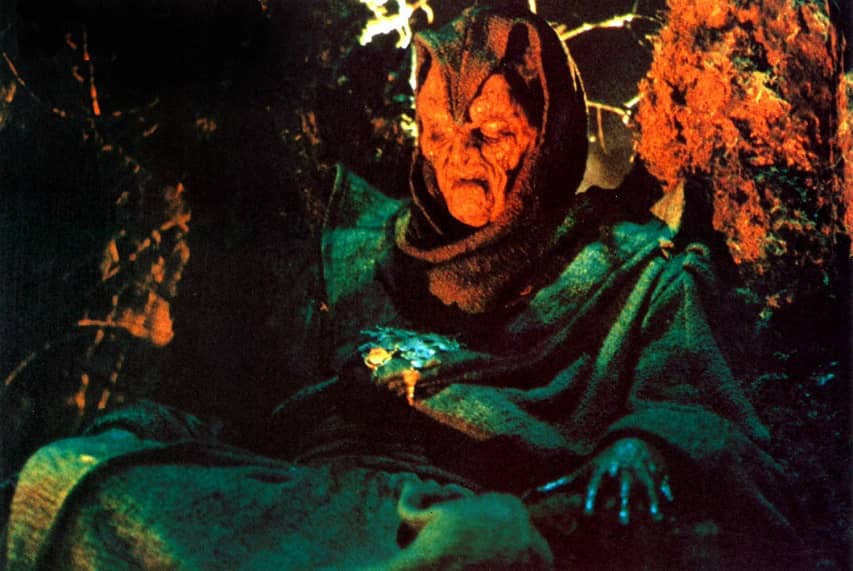
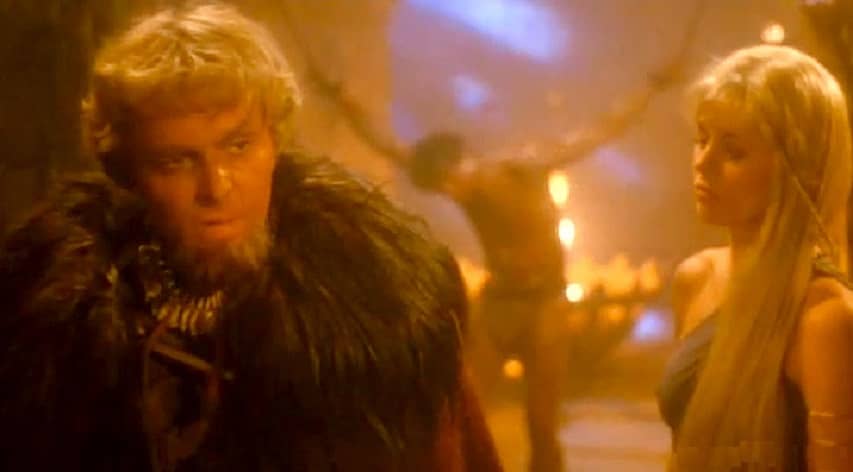
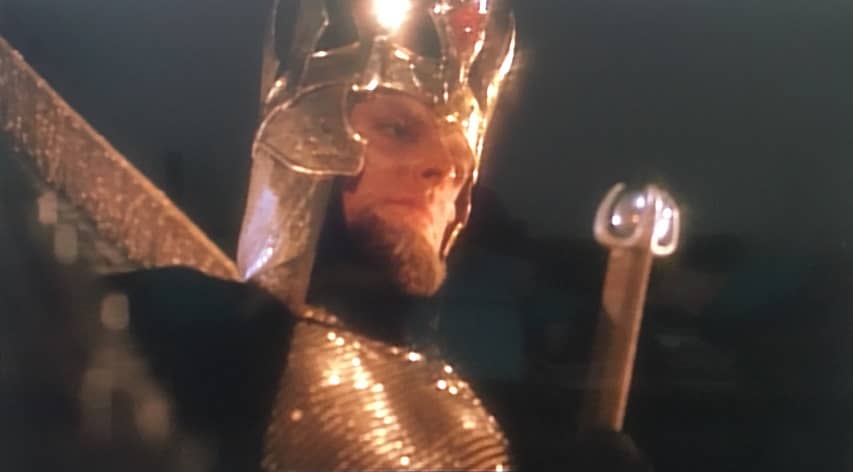
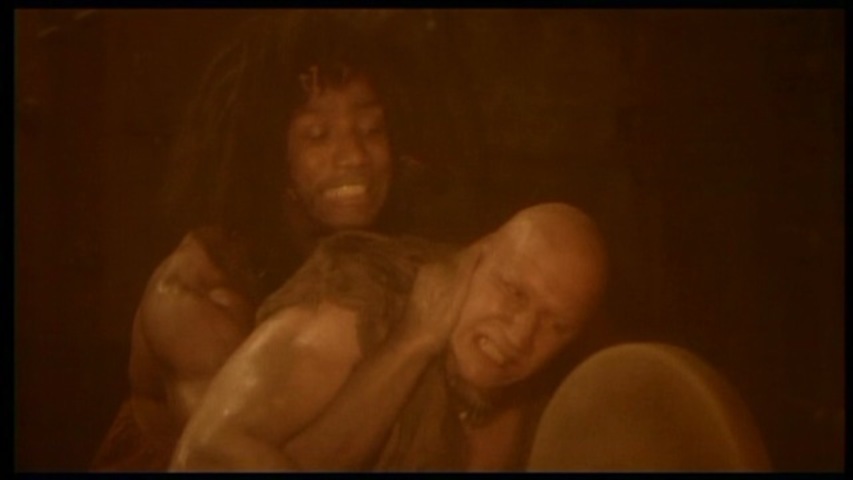
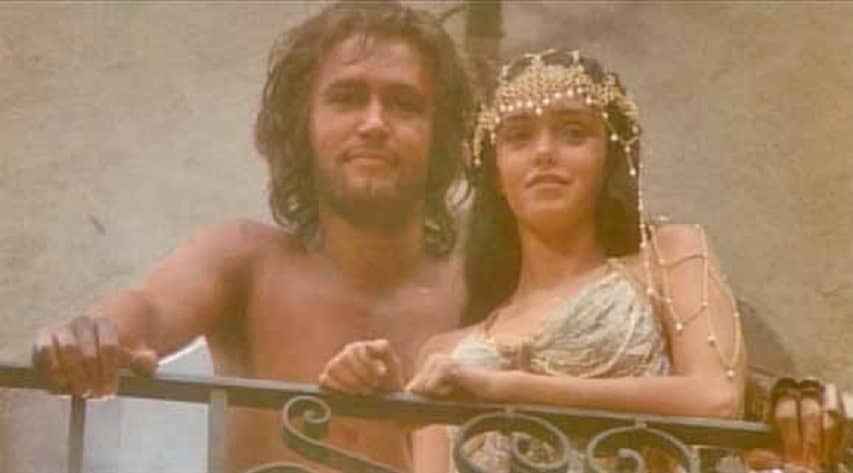
It certainly has its warts, but this is just about my favorite 70s-80s fantasy flick.
It’s been years since I watched it, but I know I liked it better than the two Conan movies. And more thank Krull, which I saw on the big screen.
And WAAAAAY more than Ator, which I also saw on the big screen and may still get my vote for worst movie I’ve watched.
Gonna do a post on the ‘sequel’?
I forgot there WAS a sequel….
Like, 10 or 15 years later, as I recall?
I think I quit about 15 minutes in. Life’s too short…
What an outstanding review/reminiscence. You might as well have been recounting my own teen years, though, since I went to a Catholic all-boys school through 12th grade, I ran about 4 years behind on the development track. But everything rings resoundingly true, except I never got to the Kane novels. Too bad about that!
Hi Bob…ah Ator the fighting eagle…ive tried to forget it. As for the sequel…i just can’t. I just…can’t do it.
Sequel? What sequel?
Come on, dang it, if you’re going to mention the sequel, at least give me the name!
I promise I will NOT blame you for any damage done to me by watching the sequel. If I can handle Ator the Fighting Eagle, I can handle this.
I think.
I count myself as one of those “miserable souls” (in the words of Criswell) who is inordinately fond of Conan the Barbarian. Of course it’s not Howard – it could never be Howard (if they had gotten Sam Peckinpah to direct it, then maybe) but it still comes surprisingly close to the mark in many ways.
I don’t care what anyone says; Best S&S Movie Ever!
You had me at boobs…
A brave and insightful review and memory of those early days of RPGs (early for both the players and the games themselves).
The only comment I would add is to mention the wonderful quick-cut editing of The Sword and the Sorcerer, epitomized by the scene of Talon’s mercenaries, led by Darius (Joe Regalbuto), are persuaded to follow a serving woman into Cromwell’s dungeon to rescue Talon: “Let me go with you!”, “Take a sword.” Quick-cut to mercenaries in cell: “I knew we shouldn’t have followed that wench!”
As for the sequel, it is called Tales of an Ancient Empire (2010), and it does have Lee Horsely as Talon, again.
And if that news frightens, then buck up, ’cause Ator has 3, count ’em 3!, sequels for your viewing, umm, pleasure?
The Sword and the Sorcerer was the best of the “Thud and Blunder” part.
As I’ve said – with polite apologies to Poul Anderson – with good storytelling ol ‘Gnorts can wield a 50lb WET NOODLE and its an awesome story and they make movies and comic books and lots of imitation based on.
I loved the first Conan movie and I had read the REH originals. Problem was REH wrote for the Pulps and they didn’t have TVs back then or movies on your computer/smart tv at a click. So the ‘entertainment’ often was hack pulp works. And “Short Stories” work in the 30 mins – 1 hour format if you translate them to the screen. “This week’s White Hood and the Roped Justice mob story #132: Mongol hordes from China kidnap Tricia GoodChristian – will they save her before she faces a fate worse than death!?” Heh – lots of pulps and earlier Penny Dreadfuls quite as excessive back then.
REH wrote only two stories – IMO – worthy of full screen treatment: Hour of the Dragon and Red Nails. Problem is, those are “Conan fan” stories. So the movie treatment – the first movie – was excellent – capturing the spirit.
Problem was – the second movie it was “What!? This didn’t just make its investment? It’s a hit!!!???” – and whoops the money men, the banker’s reps come in and “Too many cooks spoil the soup” – they dumb down Conan, throw in lots of stuff, the plot goes glacial so they just vote on a Savage Sword episode to turn into the movie – as they did in 2011 (aarrrggg!) and the edge is dulled…
But – the first Conan movie – a horde of barbarians were running behind him – and drooling young kids were waiting to embrace them!
Sword and the Sorcerer had it all – to a young boy. Heroic barbarian, evil sorcerer, tons of women as decoration and reward. That ridiculous “Fantasy” dress where its a bikini top, a very thin cut dress covering only her front and back if still – and way before Return of the Jedi and bunches of gold, jewels – the more pretty and higher status the more glitter. Lots of nudity and sex but just enough it’s not an X movie so you can view it…
And – nothing wrong with it. While I like good stories, epic fantasy – there’s also good space for WYSIWYG… And that done properly is good – “Style over substance” – but if the substance is something assured then working on mastering style is the art…
So, thanks for this article – love it!
Conan The Barbarian was a great movie, but it really had very little to do with REH and Conan, and more to do with John Milius and his philosophy. REH’s Conan would never hang his head in shame, even before a king. He would never be taken by guardsmen without killing a few in the process, or whine to Doom about him killing his family (that sucked the most). He was never a slave or revenge motivated; he was a right bastard and a party animal with a particular set of skills…
Anyway, my point is that The Sword and the Sorcerer is the closest thing to REH and Conan captured on celluloid thus far- unless the new
Amazon series gets it right!
Great article, John Searle. You pretty much nailed it. I remember this film. It was enjoyable, but was also not very good, I thought; too few things to enjoy about it, which is why I saw it only one time. Cheaply and quickly made. Haven’t seen it since 1982, so I wonder what I would think of it today. The fact that I remember it is, well . . . something that can be said for the film, I guess, lol! I also remember David Carradine in “The Warrior and the Sorceress” (1984 or so), another low-budget film, although one I enjoyed because of Carradine and because it reminded of Kurosawa’s “Yojimbo,” but a bargain-basement version, for sure. I did see it twice, however: at the theater, and on VHS. Same with “Hawk the Slayer,” with Jack Palance. I wonder what I’d think of them if I watched them these days. The 80s sword and sorcery boom was short and bitter-sweet. At least nowadays more attention and more money is being thrown into the making of fantasy films. I think of the 1980s as a sort of “experimental decade,” where film makers had no idea how to make a good S&S film, and were often just trying to cash in on the success of Conan. “Ladyhawke” was one of the better films of the decade, but today I can’t watch it because the musical soundtrack doesn’t fit the film and it gets in the way of my “suspension of disbelief” because it’s too modern, at the time. Horror films were more popular, and so we had a lot more of those, and because of the volume of horror films we got more good films than we did with the S&S genre. I’m curious now to revisit all the 80s sword and sorcery films . . . but not “Yor: Hunter of the Future,” that one was probably the worst of the bunch! By the way, Ahnuld’s Conan disappointed me, as well.
PS: I meant to say: I remember this film. It was TOLERABLE, but not very good, I thought; too few things to enjoy about it, which is why I saw it only one time.
By the way, I didn’t know there was a sequel, either. I think I’ll steer clear of that one.
Ator – just a totally, low-rent, without any merit at all, even as cheese, rip-off of the first Conan movie. At least, that’s how I remember it.
Joe D’Amato, the guy behind the Ator series, is a true B-movie Hollywood hack. You should see the titles of his stuff at imdb.
Ugh.
Eugene R: Tales of an Ancient Empire, eh?
Thanks so much, if there are any negative consequences, I hold you blameless.
John, in your comments about gamers who stuck with “traditional” D&D vs those who explored other systems and emulations I sense a philosophy I would love to see developed in a BG essay some time. Here’s a reader who is hoping for one!
I loved this film. Drug my poor mother out to it since I couldn’t get into an R rated show by myself. I saw the sequel was available and bought it on Amazon. I can’t call it a movie but the storyboard art looked great.
Hey Gabe. Id love to write it, as the great crunchy smooth debate in table top game design goes on and on.